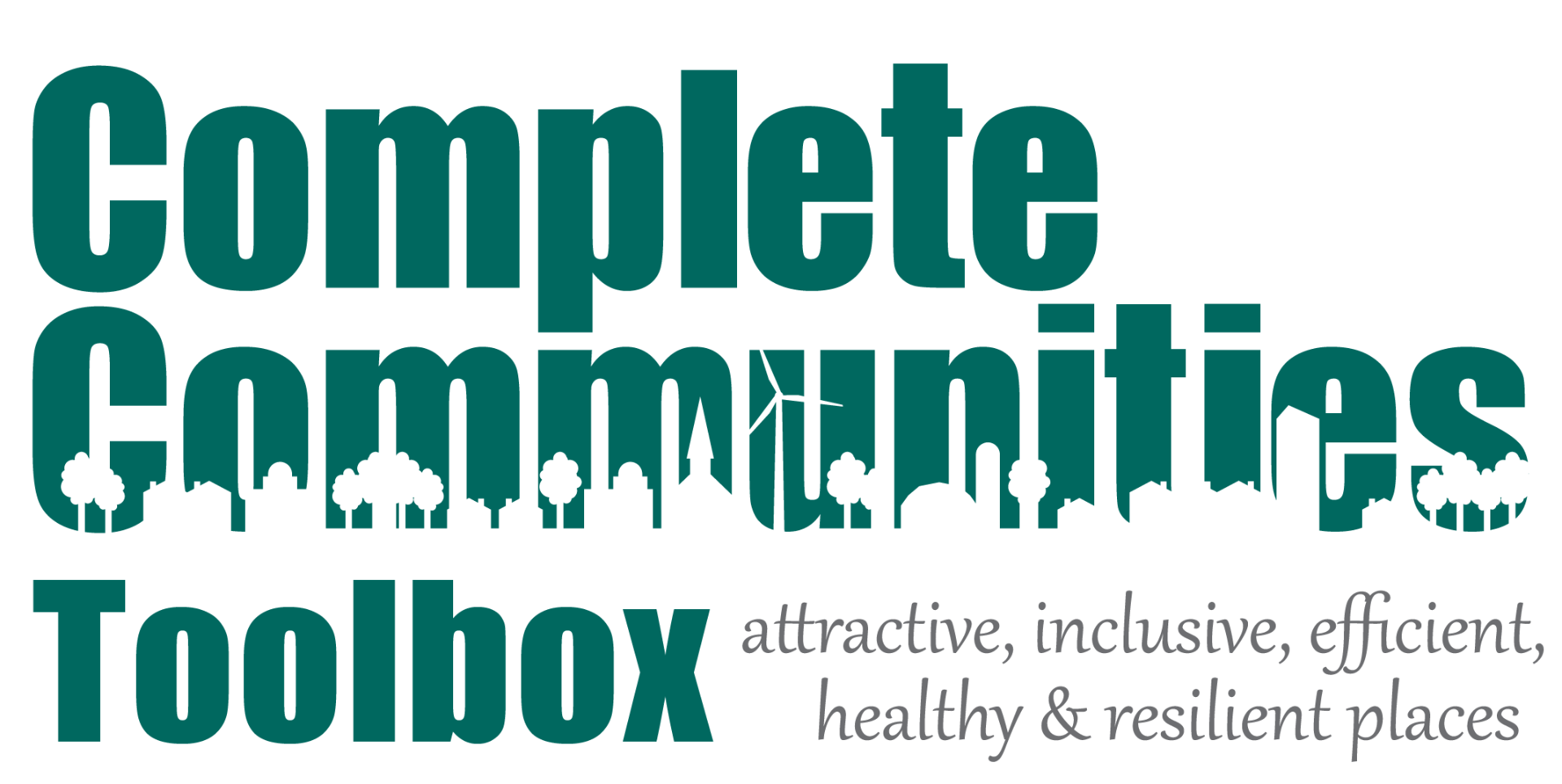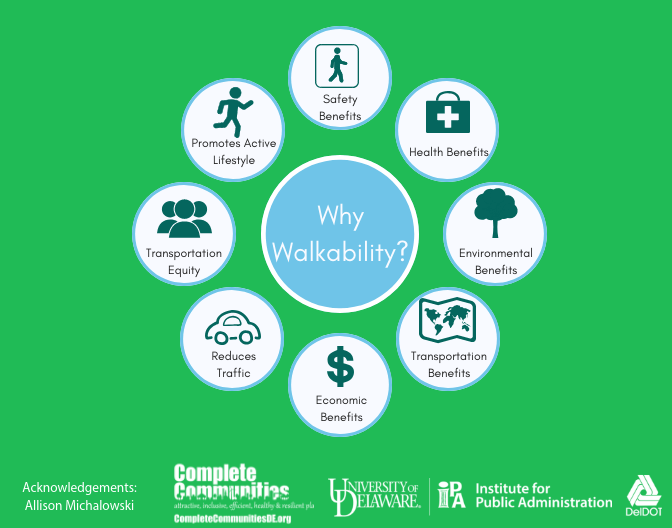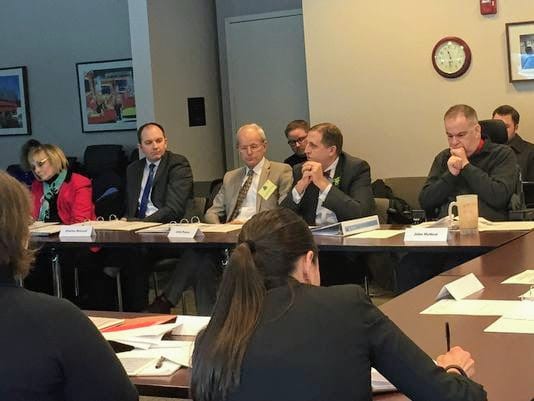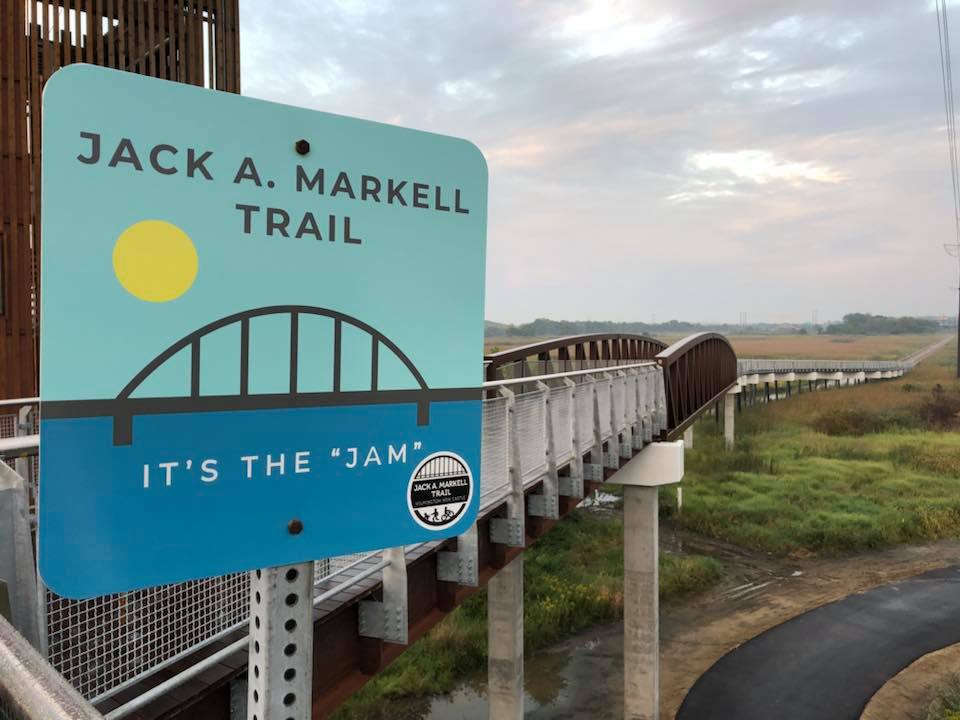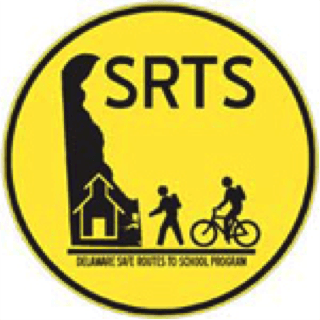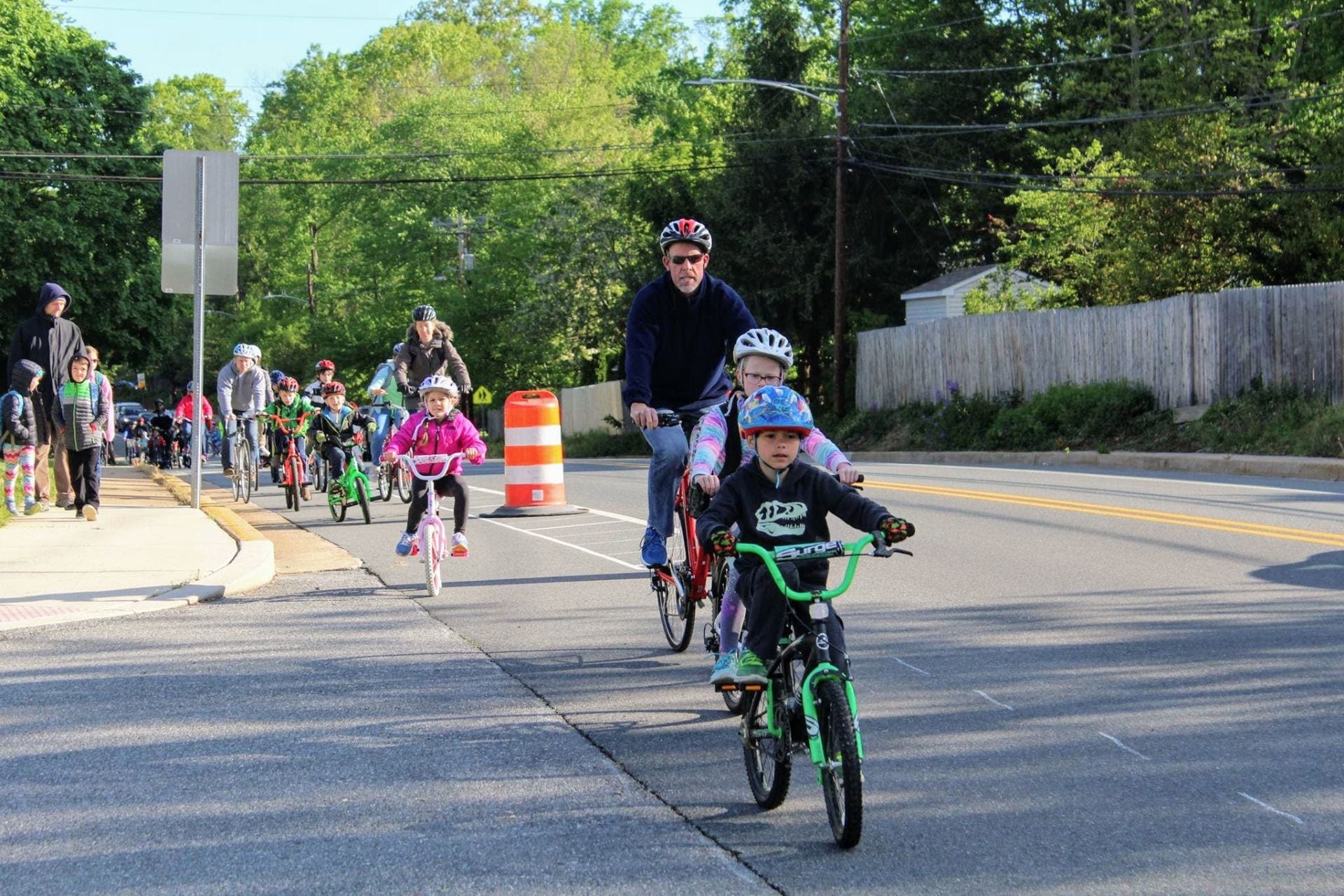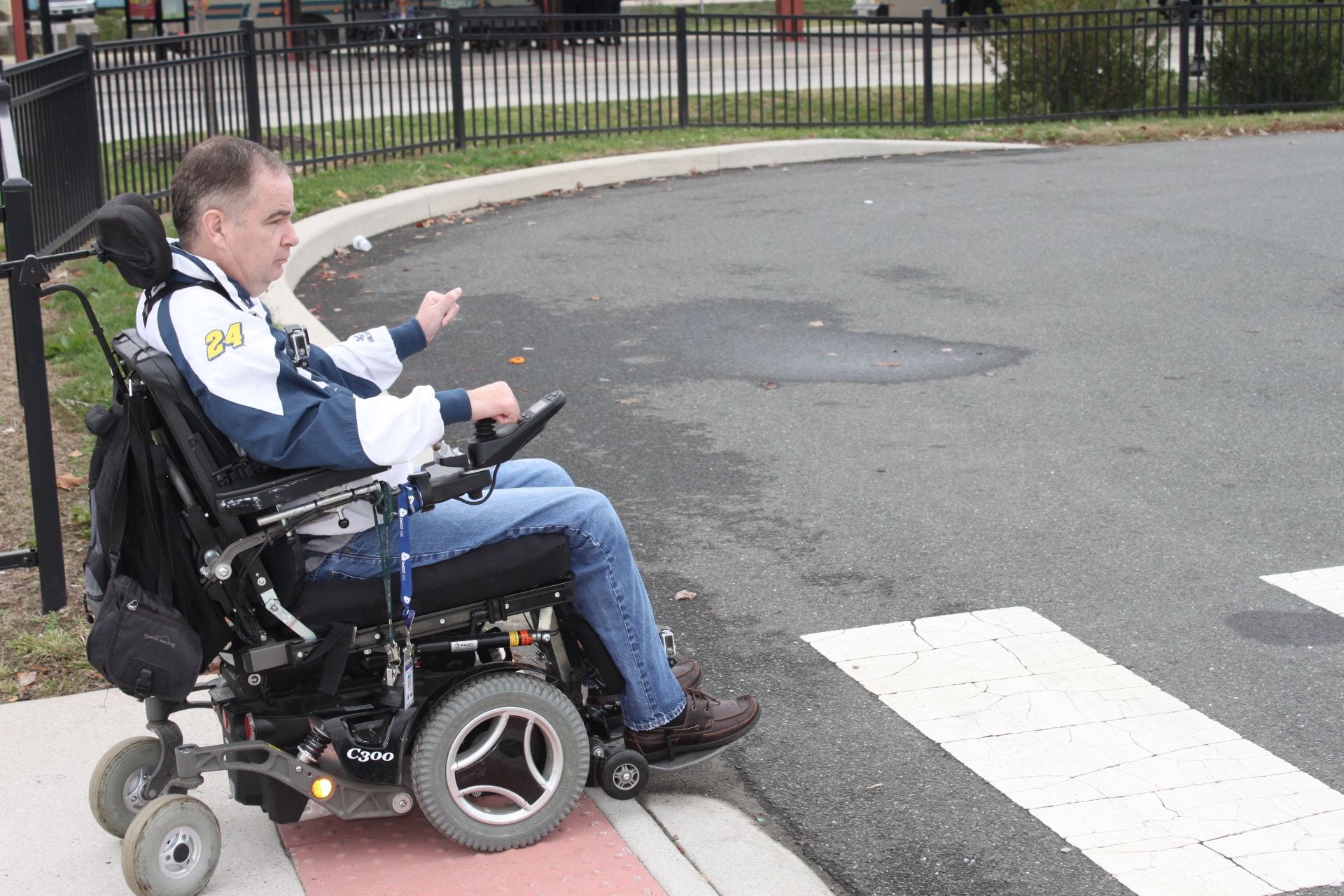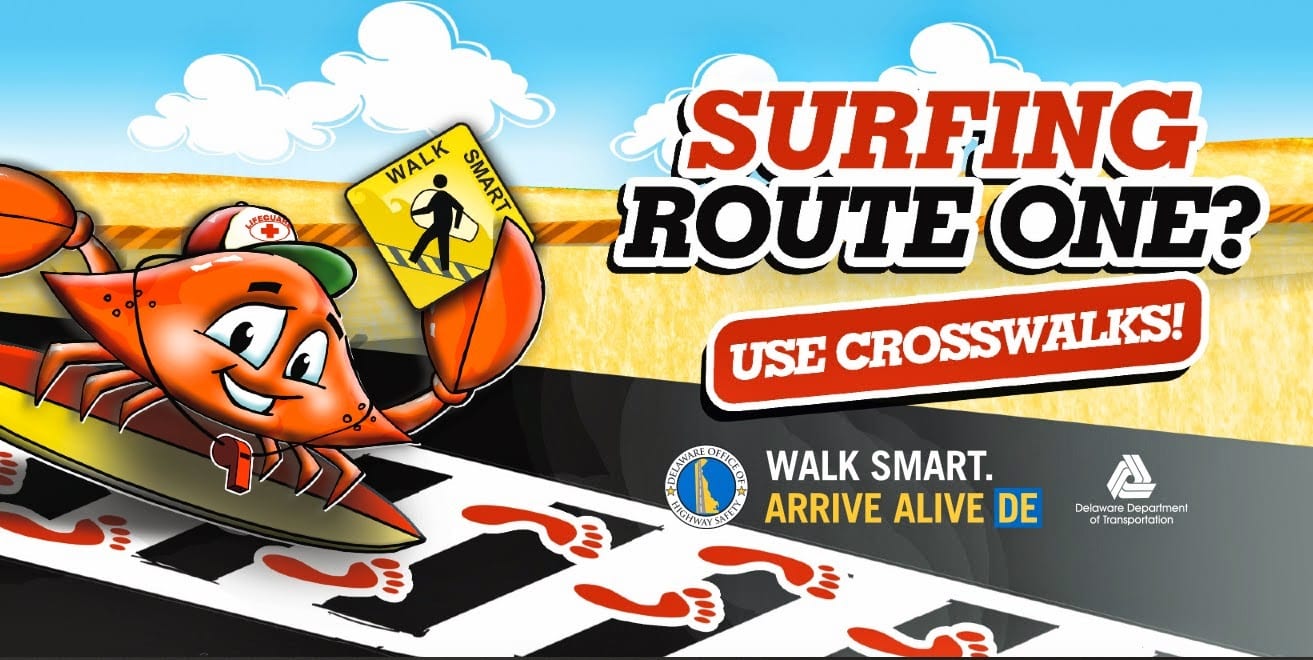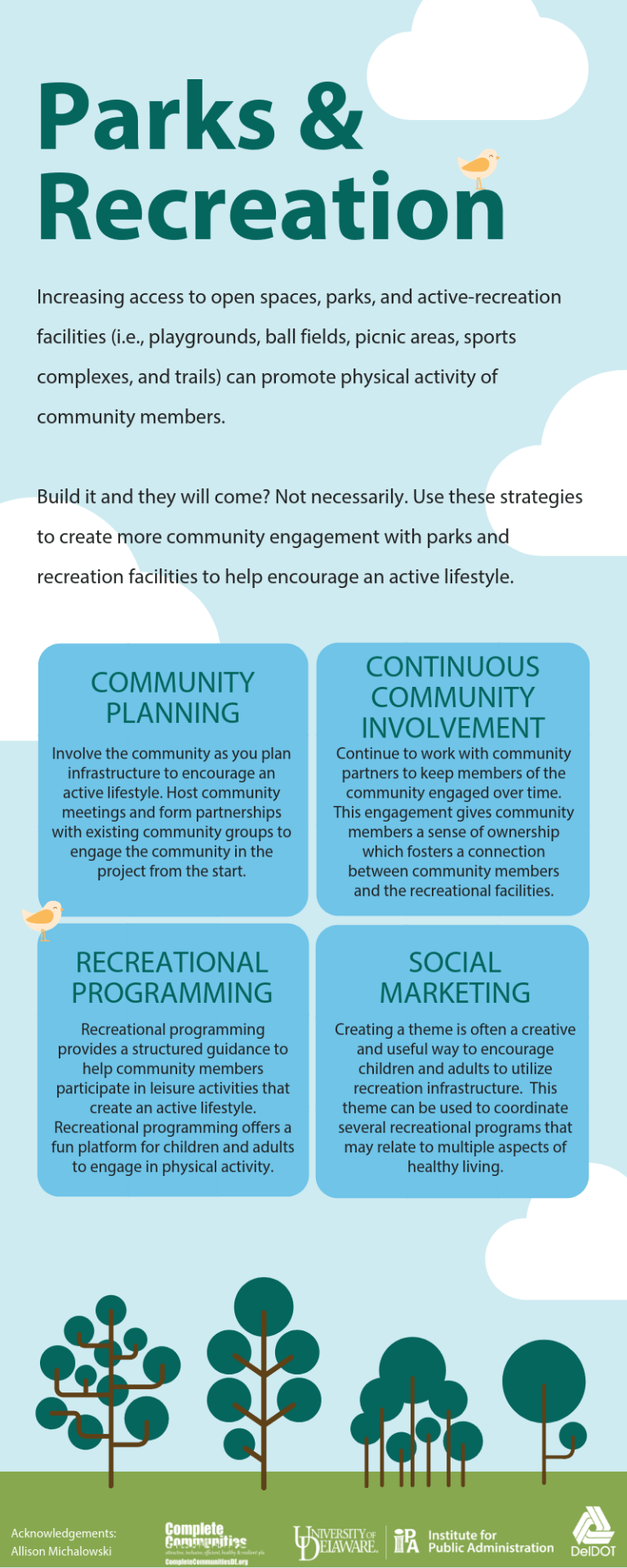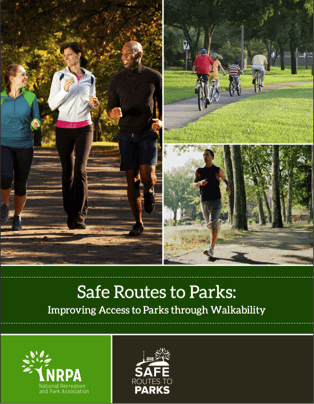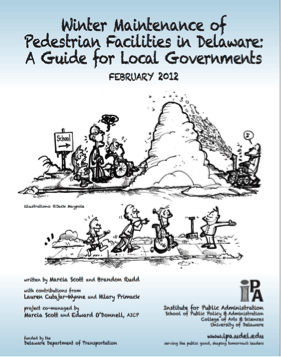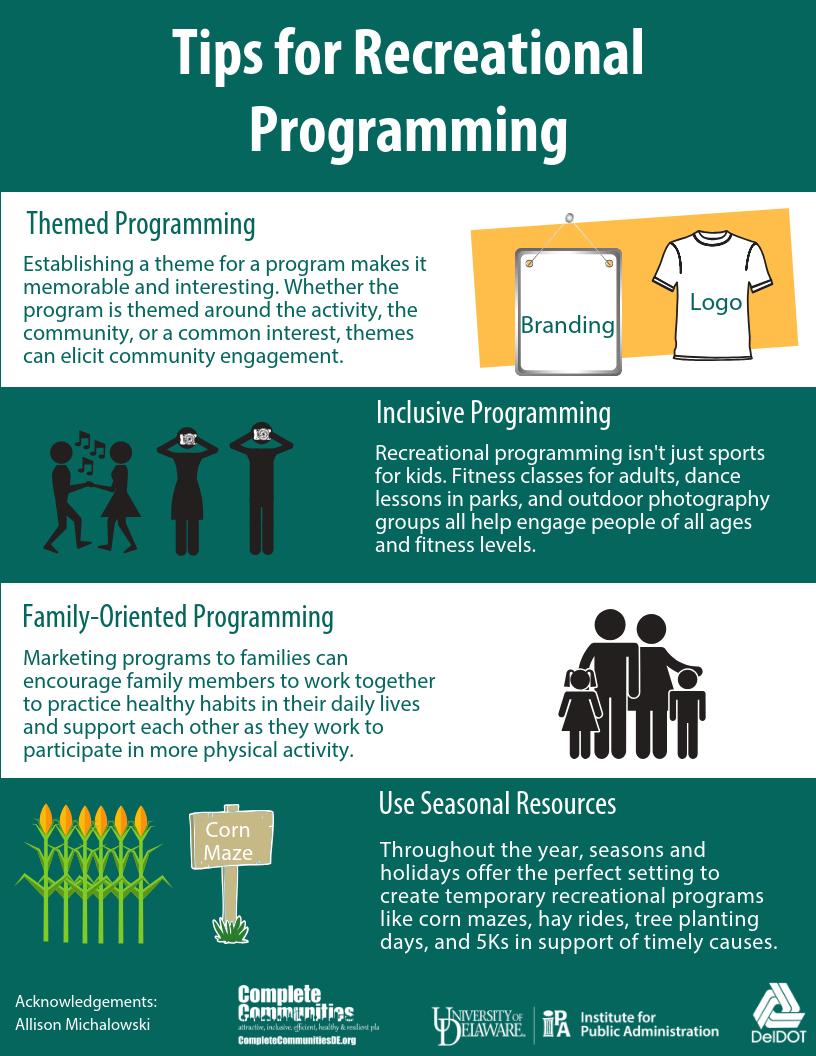Why Walkability?
Walkable, pedestrian infrastructure is a key element of a “Complete Community.” Walkable communities encourage pedestrian activity, expand transportation options, and have safe and inviting pedestrian infrastructure is accessible and serves people of all ages and abilities. When sidewalks, parks, and trails are pleasant to walk, all community members benefit. Unfortunately, not all places are walkable, but there are plenty of tools citizens and municipalities can utilize to achieve positive changes.
This video highlights the needs for walkable communities in Delaware. Walkability impacts nearly every facet of community life. Therefore, it is vitally important for citizens to understand the benefits of walkable pedestrian infrastructure, recognize where barriers exist, and work collaboratively with other stakeholders to make positive changes to a community’s walkable infrastructure. Delaware’s state agencies, local governments, metropolitan planning organizations, and advocacy groups have been working to make Delaware more pedestrian-friendly and its residents more physically active and healthy.
Walkability Tools
IPA has prepared a Walkability Assessment Tool that provides municipalities with guidelines for evaluating walkability and considering strategies to improve local pedestrian networks. For more information, visit the Walkability Assessment Tool section of the Toolbox or download Healthy and Complete Communities in Delaware: The Walkability Assessment Tool.
Everything You Need to Know About Walkability
Topics in this section:
- Why Does Walkability Matter
- Addressing Walkability through Public Policy
- Identifying Stakeholders and Strategic Partnerships to Catalyze Change
- Delaware’s Policy Framework That Supports Walkable Communities
- Planning for a Walkable Community
- Designing a Walkable Community
- Management and Maintenance of Walkable Winter Facilities
- Public Engagement and Programming
Why Does Walkability Matter?
Walkability is one of the most important components of a healthy community. According to studies performed by the Behavioral Risk Factor Surveillance System (BRFSS) and Nemours Health and Prevention Services, nearly two-thirds of Delaware’s population is overweight or obese, which can be attributed to physical inactivity and poor diet. BRFSS addresses physical-activity indicators through questions of type, duration, and frequency of physical activity performed at work and during leisure time.
The survey showed the following results: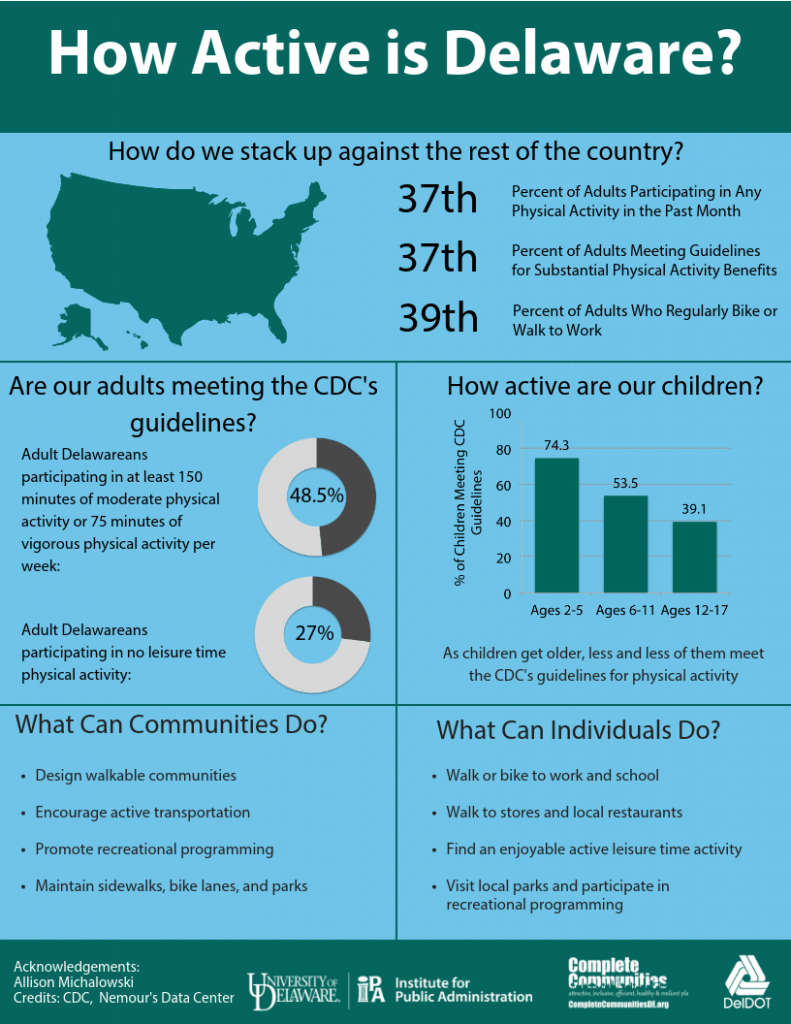
- 49% of Delaware adults engage in at least the minimal recommended amount of aerobic physical activity.
- 31% of Delaware adults engage in the recommended amount of muscle strengthening physical activity.
- 20% of Delaware adults engage in the recommended amounts of both aerobic and muscle strengthening physical activity.
- 27% of Delaware adults engage in no leisure time physical activity.
- 2.5% of Delaware adults regularly bike or walk to work.
With the exception of meeting the muscle strengthening guidelines, Delaware ranks worse than the national average in each of the above measures of physical activity.
Creating opportunities for an active lifestyle can increase the proportion of residents reaching at least moderate physical activity. Walking is one of the easiest ways to maintain functional fitness. For adults, 30 minutes of walking five days a week will significantly reduce adult risk of developing a host of diseases, ranging from cancer to depression. The U.S. Department of Health and Human Services recommends that children and adolescents get twice that amount of activity daily. They should engage in at least 1 hour of aerobic activity each day.
The WHYY TV video segment, “Exercise by Accident,” aired on the weekly show First for Friday. The video features Delaware Division of Public Health Director Dr. Karyl Rattay, who explains how the Delaware Coalition for Healthy Eating and Active Living (DE HEAL) is working to increase physical activity and walkable communities. University of Delaware IPA Planner B.J. DeCoursey details how better community design can help people “exercise by accident.”
For a humorous take on the problems posed by places that aren’t walkable, please view this Buzzfeed article: 5 Times Walkable Infrastructure Just Didn’t Work For Pedestrians.
How walkable is your neighborhood? Find out at www.walkscore.com.
Addressing Walkability Through Public Policy
The health of a community can largely be attributed to the opportunities that are provided for active transportation and physical activity among community members. For example, communities that depend on automobiles to transport people from one destination to another promote a less active lifestyle contributing to greater healthcare expenses related to poor physical health. A neglect of community-design principles, lack of walkable infrastructure, and compartmentalized built environments has led to less active lifestyles and a greater incidence of chronic obesity and related diseases.
Fostering Walkability
Communities that promote walkability and bikeability, by enabling people to reach their destinations without the use of an automobile, promote opportunities for regular physical activity participation among its members. Therefore, healthcare costs decrease as a result of better physical health.
A report commissioned by the Convergence Partnership reveals the need to design pedestrian- and transit-friendly communities to provide built-environment improvements, opportunities for active lifestyles, and alternative modes of travel. Policy changes, both at the local and state level, are recommended to foster active community environments, smarter growth (including social, economic, and environmental sustainability), and pedestrian-friendly infrastructure and design.
Planning Tools
Local governments can incorporate existing and future plans for public land and facilities, infrastructure, multi-use trails, parks, and open space into municipal planning, policy, and law by utilizing these planning tools:
- Comprehensive Plans provide a blueprint for future land use and development. Delaware’s state code requires municipalities to develop and update their comprehensive plan, which serve as the basis for zoning and land-use regulations.
- Form-Based Codes, an alternative to conventional zoning codes, promotes mixed-use development and smart growth solutions with a design-oriented public participation process.
- Context-Sensitive Design is a planning approach that considers the total context within which a transportation improvement project might occur. Looking at the whole picture helps to incorporate the need for pedestrian-friendly infrastructure.
- Transit-Oriented Development improves the quality of life and health of the community by providing walkable, compact, mixed-use, higher-density development within walking distance of a transit facility.
- Parks and Recreation Master Planning can foster healthy communities, promote conservation and environmental stewardship, stimulate economic activity, and provide transportation equity.
- Mixed-Use Development is integrated development that incorporates two or more types of land use. The variety of land uses allows for people to live, work, play and shop in one area and meets the growing market demand for walkable, activity-oriented destinations.
- ADA Self-Evaluation and Transition Plans are required, by public entities under the Americans with Disabilities Act (ADA) Title II, to ensure that barriers within public right-of-way (i.e., curbs, sidewalks, pedestrian crossings, pedestrian signals, shared-use trails, parking lots, and bus stops) are identified and addressed.
Identifying Stakeholders and Strategic Partners to Catalyze Change
How can my community join forces to address pedestrian issues, decided whether improvements are needed, and determine what solutions should be implemented?
While the benefits of a more walkable community are clear, a more difficult task is to obtain consensus on how and what should be done to achieve a safer, more accessible, and more attractive atmosphere for pedestrians. A comprehensive approach is needed to improve the pedestrian environment.
Identifying and engaging the right people in a community process or project can be the difference between a project’s success and failure. In order to identify an approach that will best meet community needs, it is crucial to identify stakeholders. In other words, those who will be most affected by a walkability project should be involved in the planning of the project. Beyond identifying stakeholders, communities should work to form strategic partnerships and advisory committees to strengthen the planning process.
Identifying Stakeholders
Stakeholders are those individuals who have either a negative or positive stake in the success of the project. Identify stakeholders by asking “Who will be most affected by the planning effort or walkability project?” Specifically, stakeholders are often individuals or groups of people that:
- Will be impacted by development of policies or plans to enhance walkability
- Have information, experience, or insight to develop policies or plans
- Have power or a position of leadership to either support or block progress of policies/plans
- Have a vested interest in the outcomes
- Are final decision makers or people who must approve the plan
- May support or impede implementation or the policies/plans
- Have been champions or critics of your work in the past
- Are considered visionary thinkers
- Can win consensus within a group setting
Powerful stakeholders will help build consensus for project support, leverage resources, and influence or engage others. Once stakeholders are identified, efforts should be made to keep them involved throughout the project.
Strategic Partnerships
Often, existing institutions in a community have a vested interest in making the community more walkable. State and local governments, businesses, public agencies, non-profit organizations, civic associations, schools, and other stakeholders already involved in active living initiatives may form strategic partnerships to leverage expertise, community relationships, and resources. Forming partnerships among stakeholder organizations can add support that strengthens walkability projects from the planning phase through implementation.
To successfully form strategic partnerships, use the following strategies:
- Identify potential partners
- Determine the benefits of the partnership
- Meet with potential partners
- Decide roles and responsibilities
- Develop an action plan to leverage resources
Public Engagement and Advisory Committees
Public engagement is key to building awareness and community support for creating safe and walkable communities. In addition to building strategic partnerships, local governments can engage citizen volunteers by forming advisory boards, commissions, committees or task forces. Local governments can appoint citizen volunteers to advisory committees build support and make recommendations to the legislative body (i.e., mayor and council members) for engineering, plans, and, policies; educational programs; enforcement actions; and encouragement activities and programs. Comprised of diverse citizens and community representatives, pedestrian advisory board or committee members may include law enforcement officials, health industry professionals, transportation or land use planners, parents of school children, parks and recreation professionals, local business leaders, elected officials, advocacy group members, civic association representatives, and local non-profit organization leaders.
For some helpful resources, visit:
- The Public Engagement section of the Toolbox
- The Federal Highway Administration’s Pedestrian & Bicycle Safety Website
Delaware’s Policy Framework that Supports Walkable Communities
Consistent with federal transportation investment policies and directives, the Delaware Department of Transportation (DelDOT) has shifted from away from an auto-centric transportation system to one that provides safe, efficient, and multi-modal options. The State of Delaware has consistently funded transportation improvements and supported programs that support walking, biking, and transit usage.
Delaware Pedestrian Council
In 2015, then-Governor Markell signed Executive Order 54 that established the Advisory Council on Walkability and Pedestrian Awareness (i.e., Pedestrian Council). The Council’s charge is to:
- Identify gaps in the system of pedestrian paths and sidewalks to create continuous, interconnected pathways
- Provide advice regarding design standards for crosswalks, sidewalks, and pathways ensuring ADA compliance
- Provide advice regarding implementation of DelDOT’s Sidewalk and Multi-Use Path Maintenance Policy
- Review traffic rules to help support a safe pedestrian environment
- Provide advice regarding accessibility and connectivity to make transit a more viable option for Delawareans
- Develop strategies for pedestrian safety, education, and awareness
Delaware Trails and Pathways Initiative
The Delaware Trails and Pathways Initiative was established “to interconnected network of shared-use trails and pathways that will support non-motorized travel and recreation opportunities for Delawareans and visitors.” Led by the Department of Transportation and the Department of Natural Resources and Environmental Control
- Make Delaware walkable and bikeable by creating a premier interconnected network of multi-use bicycle and pedestrian trails and pathways.
- Design, construct and maintain a sustainable network of trails and pathways.
Recently, the Jack A. Markell Trail, named in honor of the governor who first spearheaded the initiative, opened in New Castle County. This 7.9 mile trail provides a safe, beautiful, accessible route for pedestrians to travel from Wilmington to New Castle. Not only does the trail improve connectivity in Delaware, but it also connects to part of a 3000 mile long trail that spans all the way from Maine to Florida. Beyond the Jack A. Markell Trail, hundreds of miles of trails and pathways provide pedestrians with safe places to walk and enjoy the landscape.
Safe Routes to School
In an effort to encourage safe travel for children to and from school through the Safe Routes to School (SRTS) program, the Delaware General Assembly passed Senate Bill 353 in September 2002. The bill directs DelDOT to seek federal funds and provide grants to schools and school districts to implement pedestrian safety measures and traffic calming strategies.
Delaware’s Complete Streets Policy
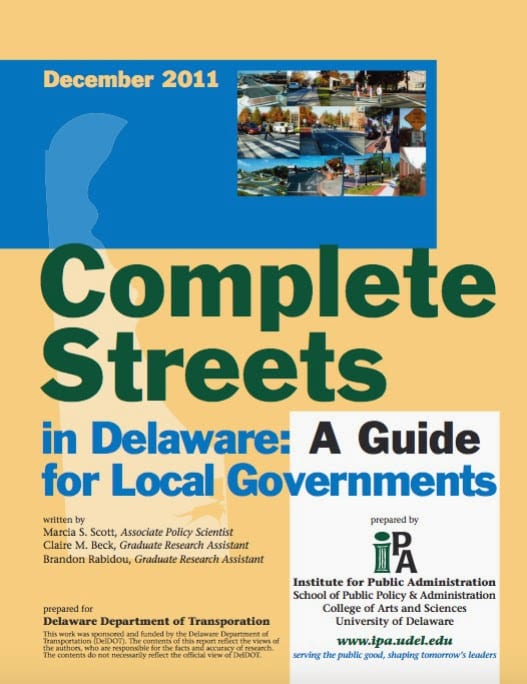 A complete street is a transportation facility that is planned, designed, operated, and maintained to provide safe mobility for users of all ages and abilities including bicyclists, pedestrians, transit riders, and motorists, appropriate to the function and context of the facility. Complete streets facilitate active transportation. DelDOT’s Complete Streets Policy consider all modes of transportation to ensure that all infrastructure users are considered in the design, construction, operation, and maintenance of its transportation system.
A complete street is a transportation facility that is planned, designed, operated, and maintained to provide safe mobility for users of all ages and abilities including bicyclists, pedestrians, transit riders, and motorists, appropriate to the function and context of the facility. Complete streets facilitate active transportation. DelDOT’s Complete Streets Policy consider all modes of transportation to ensure that all infrastructure users are considered in the design, construction, operation, and maintenance of its transportation system.
Walkable, Bikeable Delaware
The Delaware General Assembly unanimously passed the “Walkable, Bikeable Delaware” Resolution in May 2011 to support the goal of “linking cities and towns by a network of off-alignment multi-use paths that can be used by commuters in addition to recreational pedestrians and bicyclists.” The legislation enables DelDOT to allocate funds to infrastructural investments in walkway and bikeway networks in an effort to connect destination-oriented population centers. Since 2011, the Delaware General Assembly and the Wilmington Area Planning Council (WILMAPCO) have invested considerable state and federal funding in statewide pedestrian and bicycle improvements, greenways, and trails projects.
Vulnerable Road Users Law
The Vulnerable Road Users Law was enacted in August 2010, making Delaware the second state in the nation to enact such a law. The law defines vulnerable roadway users to include pedestrians, road maintenance crews, cyclists, skateboarders, rollerbladers, and those traveling by means of moped, motorcycle, farm vehicle, and animal. In addition to defining this classification, the law imposes stricter penalties and a conviction of inattentive driving if a motorist injures or kills a vulnerable user.
DelDOT’s Commitment to Accessible Transportation
Sidewalks, street crossings, and other elements in the public right-of-way can pose challenges to accessibility. Title II of ADA requires that public entities (including state and local governments) make public facilities, programs, and services accessible to persons with disabilities. The U.S. Access Board has issued Accessibility Guidelines that focus mainly on facilities on sites. In addition, DelDOT issued its Pedestrian Accessibility Standards for Facilities in the Public Right of Way or “DelDOT Pedestrian Standards.” The standards combines into one document the requirements, guidelines, and best practices for accessible pedestrian facilities in the public transportation right-of-way.
Delaware Strategic Highway Safety Plan
The goal of the Delaware Strategic Highway Safety Plan: Toward Zero Deaths is to achieve a reduction of at least 3 fatalities and 15 serious injuries annually and continue to reduce the total number of fatalities and serious injuries to achieve at least a 50 percent reduction by 2035. The plan boasts a multi-agency approach that utilizes education, enforcement, engineering, and emergency medical service strategies.
“Walk Smart, Arrive Alive DE” Campaign
The “Walk Smart, Arrive Alive DE” Campaign is a partnership between the Office of Highway Safety, DelDOT, and local and state law enforcement to provide education to communities about the importance of safe pedestrian travel practices. The Office of Highway Safety provides materials for DelDOT to distribute to municipalities interested in participating in the campaign.
Planning for a Walkable Community
There are several approaches that municipalities can undertake to develop built environments that support active living. Suggested ways to increase opportunities for physical activity include:
Active-Transportation Initiatives
To accommodate pedestrian and bicyclists, the pedestrian network (i.e., trails, paths, sidewalks, walkways) should be continuously linked and connected. Community design principles such as context-sensitive design, mobility-friendly design, mixed-use and infill development can be adopted to support the walkability and bikeability of a community. These practices are supported by the Delaware Complete Streets Policy and the Delaware Statewide Pedestrian Action Plan.
Pedestrian-Friendly Community Design
To provide alternative modes to automobile travel, communities should be designed and built with the pedestrian in mind. Better Models for Development in Delaware sets forth six principles for better development, including strategies to reduce the impact of the car. The Community-Design Tools section of the toolbox provides community design strategies that move toward “an architecture of place.” A Designing Better Places Video Series is a seven-part series that introduces “citizen planners” to general community-design principles. In addition, IPA’s Delaware Planning Education Program offers courses to learn about community design principles and how to revise local codes to foster a more pedestrian- and mobility-friendly community.
Neo-traditional neighborhood design and smart-growth strategies are being implemented to mitigate the effects of sprawl, promote a sense of community, and encourage pedestrian-friendly design. A key smart-growth principle is creating walkable communities that are attractive, convenient, safe, and healthy. For information on walkability enhancing strategies like streetscaping, infill development, and traffic calming, visit the Complete Streets and Efficient Land Use sections of the website.
Parks and Recreation Facilities
Increasing access to open spaces, parks, and active-recreation facilities (i.e., playgrounds, ball fields, picnic areas, sports complexes, and trails) can promote physical activity of community members. To promote use of these facilities, design should reflect community interests, incorporate sustainability features, and consider long-term maintenance needs and management costs. See the Parks and Recreation Master Planning section of the complete communities website for guidance in designing recreational facilities.
Build it and they will come? Not necessarily. Recreation programming can promote use of parks and trails. Social marketing can also influence behavior to promote physical activity and exercise. For real world examples showing how parks help communities become more active and walkable, follow the links below.
National Parks and Recreation Association (NPRA)
Through active transportation, parks and recreation agencies provide valuable benefits to communities by providing an engine for economic development, increasing health and wellbeing, supporting conservation and providing benefits to all citizens regardless of socioeconomic status. NPRA’s research reports convey how parks and recreation agencies have historically been closely aligned with the goals of active transportation principles, as well as playing an important role in the development and management of active transportation infrastructure.
Many of these initiatives encourage active living in that they promote physical activity both recreationally and in daily activities. For more information on promoting active living in your community, see the Active Living Spark Page on the Complete Communities website.
Designing a Walkable Community
Walking is a key part of active living, so infrastructure should be designed to make walking a safe and enjoyable option. A pedestrian circulation system is a comprehensive and connected network of sidewalks, paths, trails, bikeways, and crosswalks that links key destinations, open spaces, and focal points of a community.
A well-designed and -maintained pedestrian circulation system can encourage people to be more active and less automobile-dependent. Sound planning and design of a pedestrian network or components of the system will minimize the need for costly future facility maintenance, reconstruction, or rehabilitation. Basic components of a pedestrian circulation system are sidewalks, shared-use paths, and trails that are continuously linked to form a connected network.
As noted in the Healthy and Complete Communities in Delaware: The Walkability Assessment Tool, communities should consider the following five criteria when planning for pedestrian-friendly design:
- Continuity – The circulation system provides a continuous, unbroken network including linkages connecting sidewalks, public and private trails, shared-use paths, and major destination points within the community.
- Safety – The system separates vehicles and pedestrians, provides safe and well-marked crosswalks, and is free from obstructions.
- Comfort – The walking surfaces are accessible and accommodate all persons; they are also smooth, level, and drain well.
- Convenience – The network is designed to promote access to the community’s major destinations; distances between origins and destinations are short and direct.
- Visual Appeal – The design encourages pedestrian use, provides scenic interest, and provides unexpected and pleasing vistas.
Management and Maintenance of Walkable Facilities
It is critically important to prepare a management plan during the planning process for pedestrian infrastructure to identify ongoing management and maintenance needs, responsibilities, and costs. The following guiding principles will help ensure the preservation of an effective management and maintenance system:
- Start with sound planning and design to address future maintenance needs.
- Consider protection of life, property, and environment as key aspects of management and maintenance.
- Maintain and promote a quality outdoor recreation and transportation experience.
- Develop a management plan that is reviewed and updated annually with operational policies, standards, tasks, and routine and curative maintenance goals.
- Maintain quality control and conduct regular inspections.
- Include police, fire/rescue personnel, and field crews in both the design review of the program and continuous management process.
- Maintain an effective, responsive public feedback system and promote public participation.
- Uphold good neighborly relationships with adjacent properties.
- Operate cost-effective programs with sustainable funding sources.
Winter maintenance of pedestrian facilities is essential to ensure public safety, provide pedestrian access and connectivity, support healthy communities, safeguard public assets, and ensure compliance with ADA. For more information, download: Winter Maintenance of Pedestrian Facilities in Delaware: A Guide for Local Governments.
Public Engagement and Programming
Building recreation infrastructure such as trails, shared-use paths, and ball fields certainly promotes healthy activities. However, simply building them is not enough to persuade many community members to become involved in what is offered. Public engagement strategies help residents feel more connected to the community and make them more likely to use recreational facilities, parks, and walking paths.
Participatory Planning
In order to gain the most from these opportunities, it is best if community members are connected with the process from the beginning. When designing facilities to promote active lifestyles, including community members in the planning process is the best way to involve community members early in the process. Advisory parks and recreation boards, commissions, and/or committees can be formed to make recommendations to elected officials. Comprised of volunteer citizen advocates, parks and recreation board members play a key role in providing input on recreation programs and parks services that reflect diverse citizens’ needs and interests.
For examples of how to engage the public in the planning process visit the Public Engagement, CommunityViz®, The Charrette, Visual Preference Survey, and Crowdsourcing sections of the Complete Communities Website.
Parks and Recreation Programming
Communities can implement parks and recreation programming to foster ongoing engagement in physical activity among residents. Recreation programming entails promoting and hosting a series of events, specific activities, sports leagues, and other programs designed to get people to use infrastructure (e.g., trails, parks, playgrounds, athletic facilities, and open space) that is designed for active transportation and recreation.
Programming Considerations
When designing recreation programs for your town, it is important to consider the following:
- Creating a theme is often a creative and useful way to encourage children and adults to utilize recreation infrastructure. One statewide example is the “No Child Left Inside” program which includes tips and calendar ideas to encourage kids to enjoy the outdoors.
- Combine physical activity programming with comprehensive programming designed to reduce obesity. For example, Nemours promotes the 5-2-1-Almost None campaign to reduce obesity through nutritious eating and physical exercise.
- Provide a diverse array of programming, so that people of all fitness levels feel comfortable participating in offered activities.
- Use holidays and seasonal resources to promote physical activity through temporary activities like corn mazes.
- Consider providing children’s programs that combine education about wildlife, geology, fossils, and more with physical activity programming to keep kids engaged both physically and mentally.
- Offer family-oriented activities to help all family members practice good health behaviors with one another.
- Design recreation programming for people of all ages. While many people think recreation programming is primarily meant for children and teens, offering outdoor fitness classes, dance lessons, and special interest activities like photography can all help people of all ages feel more engaged in parks.
- Promote programs that encourage people to practice healthy behaviors in and out of the program by teaching participants about healthy habits that are easy to practice in the community like proper biking etiquette, maintaining a walking log, and taking the stairs.
Recreation programming helps community members use parks, trails, and other recreational facilities to become more active by fostering a sense of community and giving people confidence that they know how to practice healthy behaviors. For more information about designing recreational programming, visit the websites of nearby towns as well as the Recreation Programs section of Active Living Research by the Robert Wood Johnson Foundation. For more information about how to promote active living through recreational programming and other strategies, visit the Active Living Spark Page.

